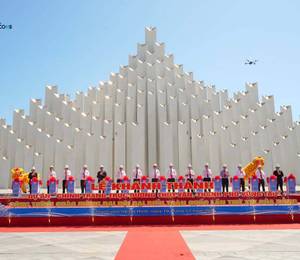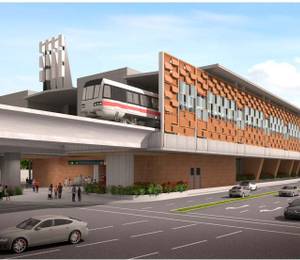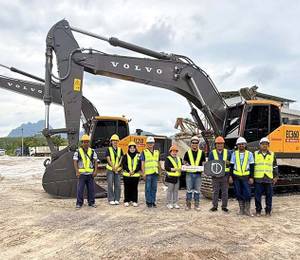In recent years, the Singapore government has introduced guidelines and initiatives to encourage the adoption of collaborative contracting in the construction industry. Max Shea, director, project and contract management (Asia) at Surbana Jurong (SJ), shares with SEAC his perspective and the importance of this contracting model.
Collaborative contracts allow the project owner and its key partners (architects, engineers, contractors, equipment suppliers, etc.) to work together closely in the development of a project. They tend to focus on common goals, rather than individual interests.
This approach is not completely new to Singapore, said Mr Shea. “For example, early contractor involvement (ECI) is a form of collaborative contracting that has been used before.
“Another example of collaborative contracting is the integrated project delivery (IPD), which is a construction project delivery method where parties involved in the design, fabrication and construction are joined together under a single agreement to foster more effective communication throughout all phases of the project.”
Highlighting the main benefits of collaborative contracting, Mr Shea pointed out that “it encourages all parties and stakeholders to act in a spirit of mutual trust and co-operation. This contracting model can result in better time and cost control, and equitable sharing of project risks.”
SJ, through its company Threesixty Cost Management, helps clients manage the associated costs and contracts of their projects in an independent, efficient and responsible manner. SJ provides in-depth cost and commercial management and contractual advice from project inception to completion. The company has also been involved in several projects using collaborative contracts.
‘Steep learning curve’
Earlier this year, the Building and Construction Authority (BCA) launched the NEC4 contract framework in Singapore to widen the adoption of collaborative contracting. This is in addition to the Public Sector Standard Conditions of Contract (PSSCOC) Option Module for public sector projects.
“While NEC4 is widely used in the UK, Hong Kong and Australia, it is very new to Singapore,” said Mr Shea. “The local industry has been using PSSCOC, SIA and REDAS for the last 10 to 20 years. It will be a steep learning curve for all stakeholders, including owners/developers, consultants, contractors, sub-contractors, suppliers, etc., if the NEC4 form of contract is adopted.”
“The PSSCOC Option Module comprises a set of collaborative clauses to be used together with PSSCOC, or to supplement the core clauses in PSSCOC,” he explained. “The NEC4 contract framework, on the other hand, is altogether a new form of contract. The terminologies and contract mechanisms under the NEC4 contract framework are also different, when compared to PSSCOC, SIA, or REDAS.
“We have adopted PSSCOC Option Module E collaborative contracting in one on-going residential project, and we are now adopting NEC4 contract in another on-going residential project.”
Mr Shea further mentioned that NEC offers a full suite of contracts including sub-contracts; design, build and operate contracts; and facilities management contracts. This will allow greater collaboration among stakeholders involved in the project.
Speaking of the challenges in the private and public sectors when it comes to implementing a collaborative contracting process, Mr Shea said, “As the typology of projects is different, the risks and challenges are also different. For example, in a commercial project, private sector clients have pressure to deliver the project in time to avoid/minimise the loss of profit/loss of rental income if the project is delayed. As such, there are usually more onerous contract requirements in place to protect the private sector clients’ interest.”
Indeed, the shift towards collaborative contracting will not be easy, given the process is complex and requires a change of mindset for all stakeholders. Nevertheless, the potential benefits for the construction industry are significant – ones that will improve the way the projects are delivered – and these cannot be ignored.
Mr Shea reiterated, “As collaborative contracting encourages mutual trust and co-operation, all parties can have honest and open communication. Thus, they are able to identify issues early and work together to provide solutions and resolve these issues together, rather than waiting until the end of the project.”











